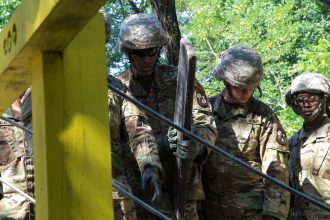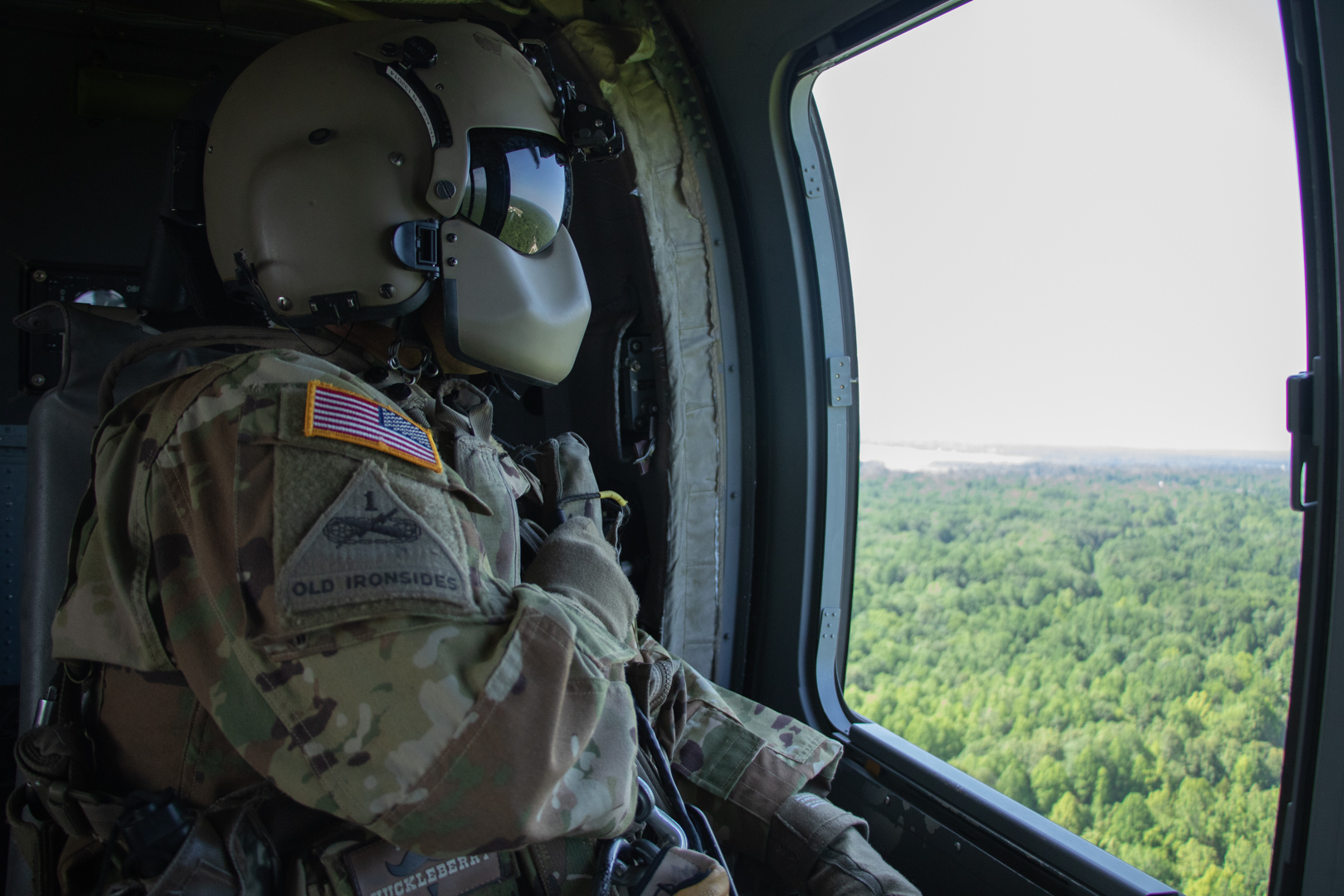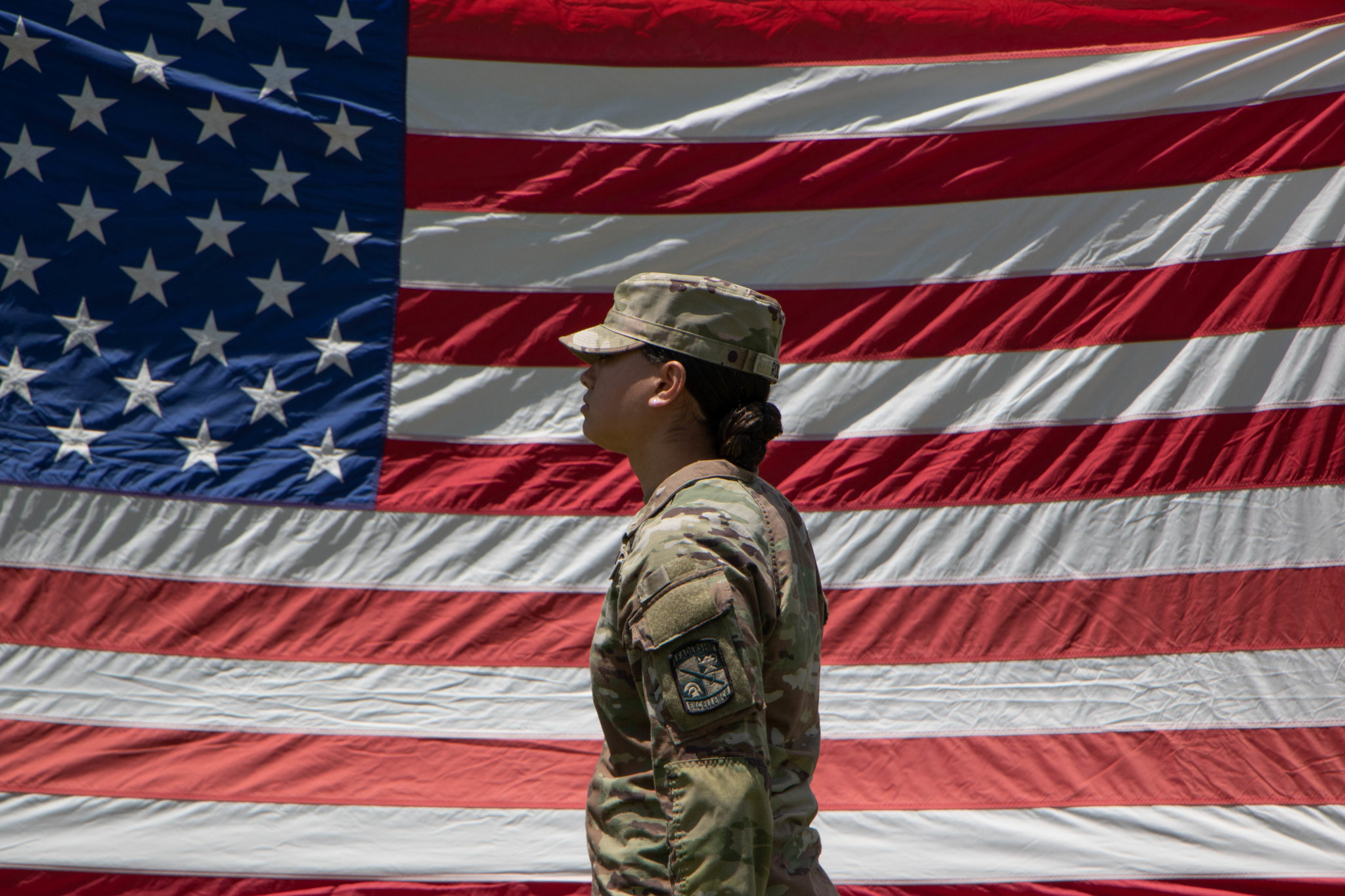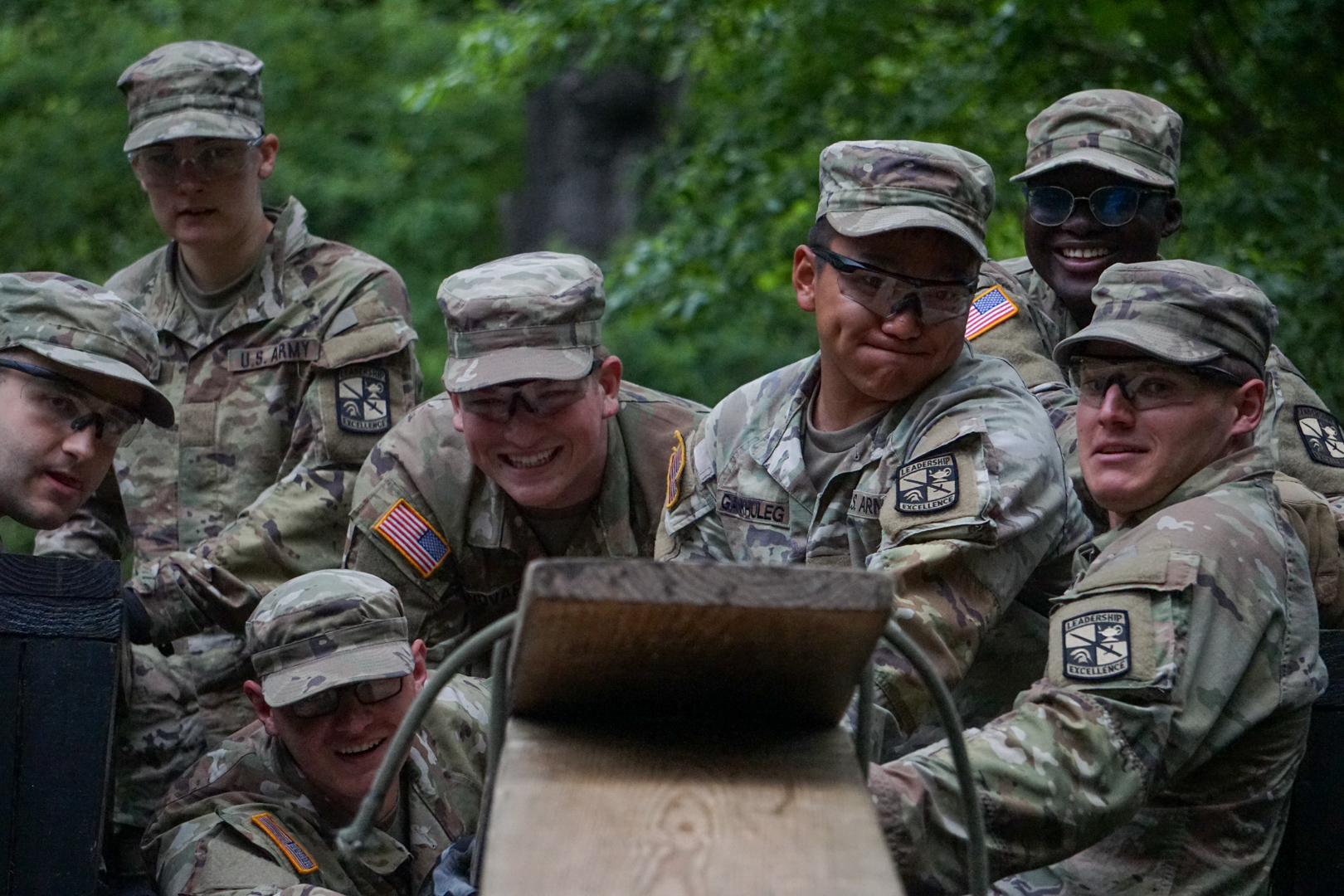FORT KNOX, Ky. – “By virtue of the fact that you are all sitting here right now means you are infinitely successful,” said Lt. Col. Daniel Gregory, from The University of Hawaii, to the Cadets of 8th Regiment, Advanced Camp, Bravo Company. “You have different experiences and backgrounds which means that you have a different way of viewing the world based on those prior experiences.”

8th Regiment Advanced Camp, Bravo Company, 3rd Platoon, 3rd Squad working together during the FLRC. Fort Knox, Ky. June 30, 2019. | Photo by Mary Kate Griffin, CST Public Affairs Office.
8th Regiment Advanced Camp Cadets had to work in squads to complete the Field Leadership Reaction Course (FLRC), this morning, as part of their leadership development.
“So far, the only thing Cadets have had to do as squads and platoons is to get to the right place at the right time, in the right uniform, and hopefully with all the right paperwork,” said Gregory. “Today they are given the opportunity across a series of obstacles to work together as squads in unison toward a common objective.”
Having only been at Fort Knox for three days, 8th Regiment Cadets consider the FLRC a break from the monotony of in processing.
“It’s nice to finally get in the field,” said Cadet Kailey Hansen attending The University of Wyoming. “This is a fun way to get to know everybody’s different types of leadership styles. I think it’ll help us when we go out into the field so we know what to look for in a leader.”
Each obstacle simulates a hazardous setting that Cadets must navigate cautiously. The color yellow designates electric areas and the rubber lining on the surface of each obstacle represents a river of scalding lava. One false step and squads receive time penalties allowing less time to execute and achieve the objective. Cadre at any time may limit a squad’s communication to hand signals or a single Cadet’s mobility to their legs. All of these complications make the 20 minutes allotted to complete each objective seem like seconds.

A view of the “lava” at an obstacle at the FLRC. Fort Knox, Ky. June 30, 2019. | Photo by Mary Kate Griffin, CST Public Affairs Office.
“We failed our last obstacle, but I think our morale is still high,” reflected Cadet Andrew Hargrett from Valdosta, Georgia. “We should’ve executed faster.”
The University of Texas at Arlington Cadet was able to get two of his squad members to the other side of the first obstacle, but not until nearly ten minutes had passed in planning that execution.
Cadets going through the FLRC must use their planning period strategically to identify squad competencies and assets.
“You just have to ask questions,” stated Master Sgt. Brian Relation from The College of William & Mary in Virginia. “‘Does anybody have any good ideas? Has anybody done this? Has anybody done anything like this?’ You look for subject matter experts with resources and materials.”
Cadet William Stuart, from Minneapolis, Minnesota, saw potential in a tool supplied to his squad that could lead to its success.
The Furman University Cadet proposed that his squad use a rope to move a heavy makeshift bridge to alleviate the weight of lowering the planks. Stuart figured the rope would provide solid leverage and a more likely success.

8th Regiment Advanced Camp Cadets gently lower a makeshift bridge using rope at an obstacle at the FLRC. Fort Knox, Ky. June 30, 2019. | Photo by Mary Kate Griffin, CST Public Affairs Office.
“We’re being told to use our muscles, but why use our muscles when we have equipment we can use?” asked Stuart.
Apart from being an obstacle course, the FLRC is a comprehensive test of Cadets’ leadership, critical thinking and problem solving skills. As a result of completing this training, Cadets build a stronger camaraderie with each other and gain a deeper understanding and reverence for tactical leadership.




